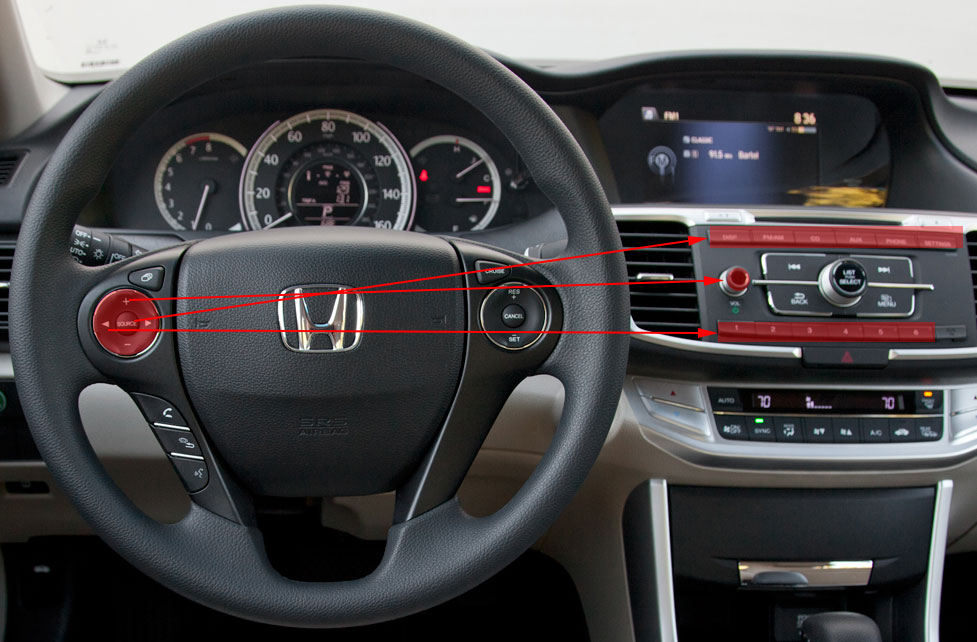
Want To Understand Apple Watch? Look At Your Steering Wheel
Last night while I was out for a drive, I had an incredible realization about the possible benefits of Apple Watch. I was listening to the radio (yes, I do that from time to time), and I was jumping around between channels and changing the volume with my thumb. Just like I always do. But this time, I looked down at the steering wheel and then over to my dashboard, and a thought occurred to me. “Huh,” I said to myself, “that’s interesting. The controls are right down here and right over there.” And then I started to understand the value of having such controls within a few inches of my fingers, even when redundant controls are only a few inches farther away.

So then I started to wonder why. Why would car manufactures waste the resources and incur the expense of putting a variety of controls right on my steering wheel when the same exact buttons are are also accessible directly to my right? Sure, it maybe started out as a convenience, a premium enticement for customers to jump to the next trim level. But these kinds of controls are now totally standard even at most entry levels. So again, why?
The reason seems clear enough: Safety. Everyone recognizes the importance of helping drivers keep their eyes on the road. As much as we don’t like to think about it, when we drive, we’re each taking a big risk. Every day we get into a car, we’re basically rocketing down the boulevard in a 3000-pound battering ram. And so, while it’s incredibly easy for us to take our hands off the wheel to turn the radio knob or press a button, it makes even more sense to put the most common of those controls in a place where we don’t have to turn our eyes away from the road. That’s powerful.
But how does this tie into Apple Watch? Surely we’re not risking all that much by always looking down at our phones, are we? Well, it all depends on what you’re doing. To continue the metaphor, if you’re doing that nonsense while you’re driving, then you sure as hell are. But will putting some of that distracting info on your wrist really help in that scenario? I can think of several examples where it certainly would. Here’s a common one: Your iPhone’s in your pocket as an important call comes through. How do you answer while doing 70 on the interstate? Well, you could take your hands off the wheel and hastily unbuckle your seatbelt to dig around at your hip and yank out your handset with one ring left before the call goes to voicemail. Or, you know, you could keep your hands at ten and two, tell Siri to accept the call, and talk freely as you would to a passenger right beside you. Seatbelt stays on, car stays on track, and you stay out of the rush hour traffic report.
To me, the steering wheel revelation offers an even more basic level of insight. And that insight has to do with friction. Friction, in nearly every context, is something we’re always trying to get rid of. Anything we can do to make things faster and more efficient is almost always welcomed, especially when it comes to consumer technology. Whether it’s 1-Click ordering at Amazon or self-checkout in Walmart, if there is a faster way to get something done, we’re generally all for it.
Just think about all the tiny things we do over the course of a week that add up to minutes and hours of wasted time. Remember how paying with a credit card used to be, with those big metal sliders and carbon paper copies and all that nonsense? Remember paying with checks? We want faster, even if it amounts to just a few seconds saved.
And that’s only one scenario. Apple Watch as “remote control” represents one use case out of thousands. Is that use case a necessity? Of course not. But then again, neither is your iPhone. Or your car. Or its steering wheel-mounted radio buttons. But you use them every day, and you’d probably be pretty annoyed if you didn’t have access to those amenities any more. Apple Watch is going to be a lot like that.
Once you wear it, you’ll never want to take it off.
Battery complaints in 3, 2, 1…